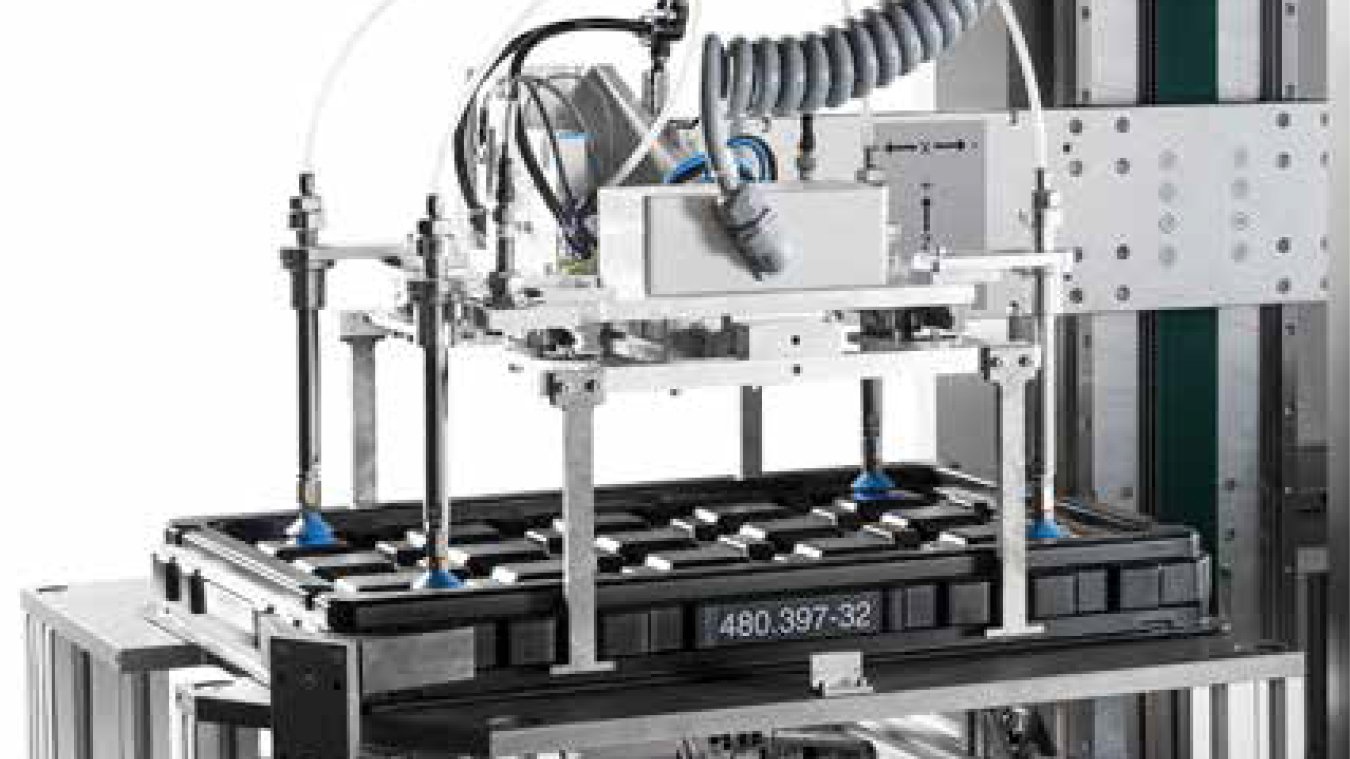We have been using control technology from Rockwell Automation, since 2011,” explains Andreas Hahn, sales and project management for BWM. “And we decided to deploy it on the Trayfeeder because Rockwell Automation was able to implement our requirements quickly and easily. We also intend to develop and grow new markets and with its global acceptance, Rockwell Automation was an obvious choice from a business perspective too.”
In order to achieve the goals set by bwm, Rockwell Automation proposed an integrated automation solution composed of commercially available products. At the heart of the system is an Allen-Bradley® L18ERM CompactLogix™ programmable automation controller (PAC), which coordinates two Allen-Bradley Kinetix® servo drives in real time. These control two Allen-Bradley VPL series servo motors wired by single cable. An Allen-Bradley PanelView™ Plus 600 HMI for visualization and Stratix 2000™ Ethernet switch for communications complete the integrated automation solution. In addition to the supply of products and components, Rockwell Automation also provided the services of a Global OEM Technical Consultant (GOTC) – an application specialist – for a complete software conversion and a Project Manager to coordinate the process to take care of quality for all deliverables.
Thanks to the integrated architecture concept running on an EtherNet/IP™-based single network infrastructure the PAC is able to control the two servo axes in real time and deliver significant cycle time improvements, lowering it from 20 seconds to 14. A six second saving may not sound like a lot, but when considered cumulatively and in relation to other faster-cycling equipment in a production environment, the advantages of quicker component delivery really begin to stack up. The transfer motion is also smoother, with less jerking and pendulum-type movements. This helps to protect the mechanical structure and integrity of the machine.
By using Ethernet as the communication backbone, bwm has the option to expand the machine even further into the Connected Enterprise (IoT). This will allow it to offer a broad range of additional value-add functions to its customers, including the collection of real-time performance data, historical data for performance assessments and maintenance schedules and connectivity beyond the shop floor into enterprise systems that can help manage the equipment even more precisely in line with other assets on site. The use of standard Ethernet within EtherNet/IP means that there is very little that needs to be done for these connections to be established; and full security solutions are also available for user control and to prevent unwarranted access.

